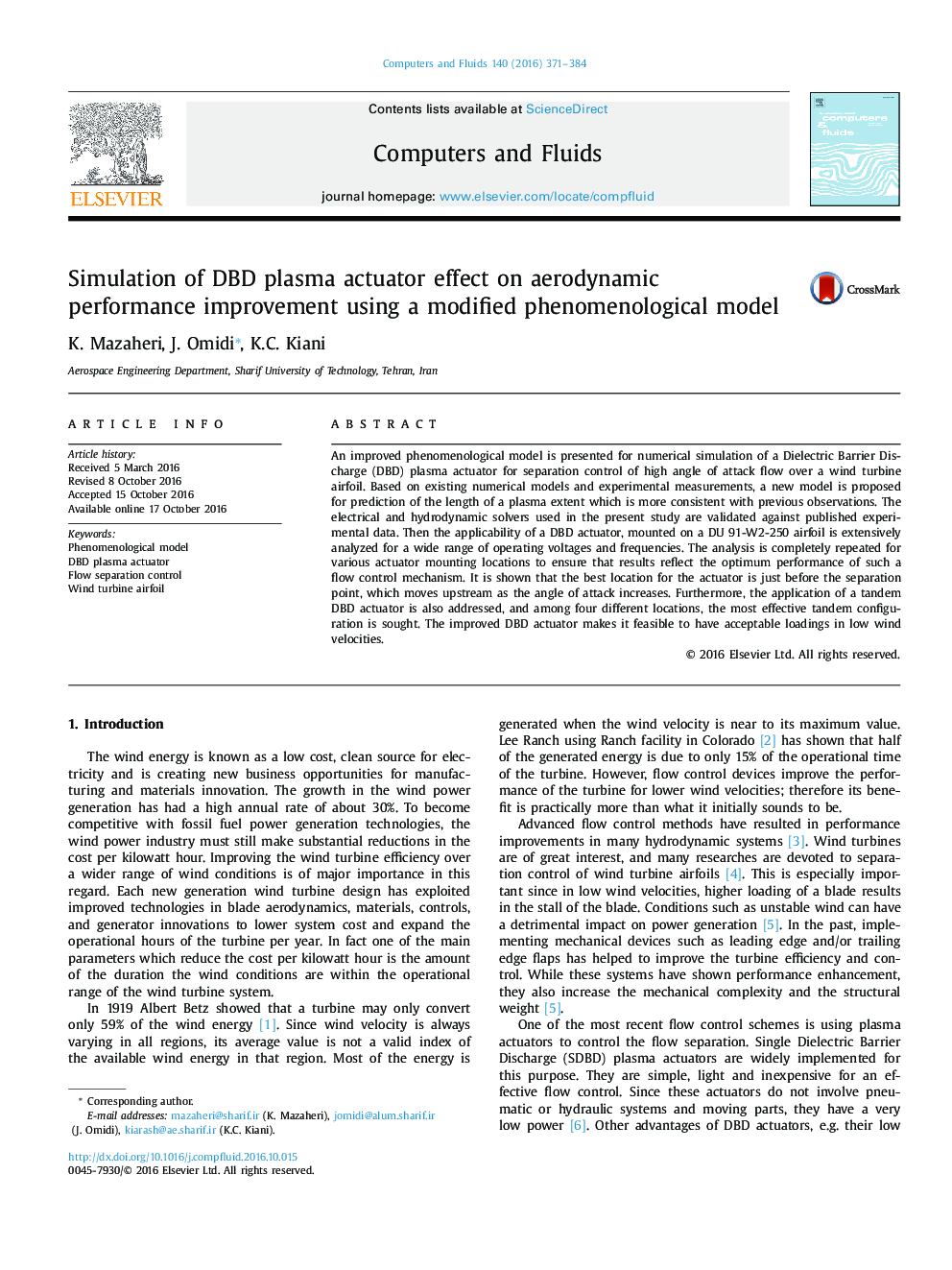| Article ID | Journal | Published Year | Pages | File Type |
|---|---|---|---|---|
| 5012060 | Computers & Fluids | 2016 | 14 Pages |
Abstract
An improved phenomenological model is presented for numerical simulation of a Dielectric Barrier Discharge (DBD) plasma actuator for separation control of high angle of attack flow over a wind turbine airfoil. Based on existing numerical models and experimental measurements, a new model is proposed for prediction of the length of a plasma extent which is more consistent with previous observations. The electrical and hydrodynamic solvers used in the present study are validated against published experimental data. Then the applicability of a DBD actuator, mounted on a DU 91-W2-250 airfoil is extensively analyzed for a wide range of operating voltages and frequencies. The analysis is completely repeated for various actuator mounting locations to ensure that results reflect the optimum performance of such a flow control mechanism. It is shown that the best location for the actuator is just before the separation point, which moves upstream as the angle of attack increases. Furthermore, the application of a tandem DBD actuator is also addressed, and among four different locations, the most effective tandem configuration is sought. The improved DBD actuator makes it feasible to have acceptable loadings in low wind velocities.
Related Topics
Physical Sciences and Engineering
Engineering
Computational Mechanics
Authors
K. Mazaheri, J. Omidi, K.C. Kiani,
